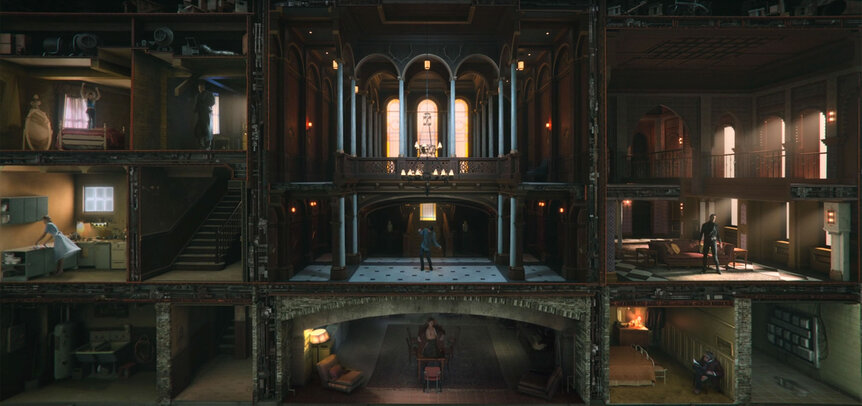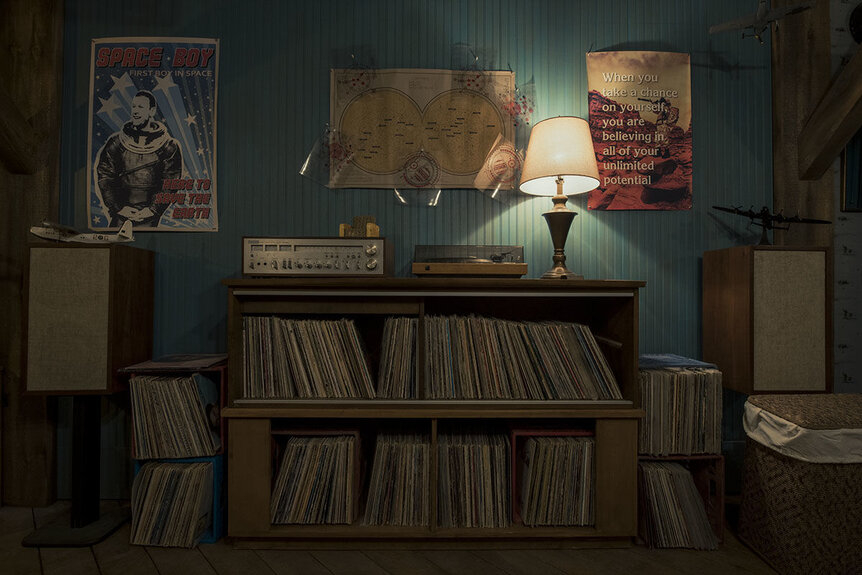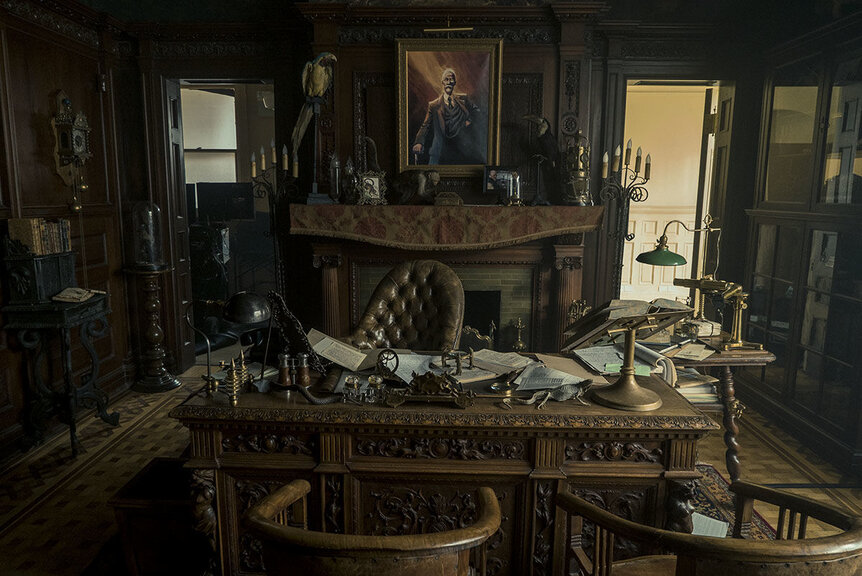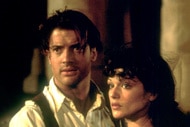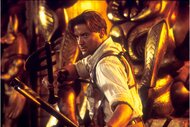Create a free profile to get unlimited access to exclusive videos, sweepstakes, and more!
Emmy Contender: Inside The Umbrella Academy's impressively designed Hargreeves mansion
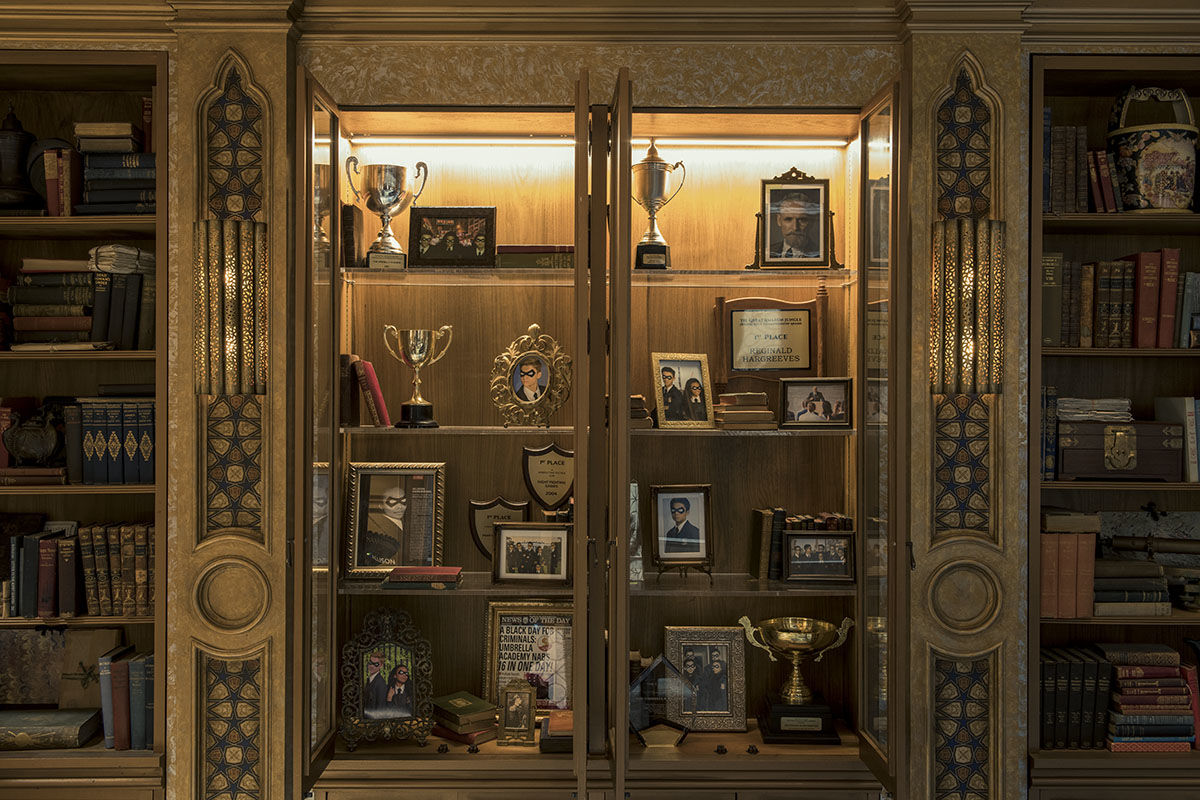
Welcome to Emmy Contenders 2019. This month, SYFY WIRE is speaking to a long list of actors, artists, and artisans whose work earned them Emmy nominations this year. Today we speak with production designer Mark Worthington, nominated for his work on Netflix's The Umbrella Academy.
Do androids dream of interior design? A few, maybe, if Grace, the robot mom on The Umbrella Academy, is any indication. Although it's not explicitly stated on the show, Grace — who raised Reginald Hargreeves' seven adopted superpowered children — is also responsible for the look of some of the Academy mansion's décor, like the kids' quarters, for example, and her own alcove, where she recharges. In the real world, though, The Umbrella Academy's production designer had to create Grace's creations.
"The idea," production designer Mark Worthington tells SYFY WIRE, "is that since Hargreeves isn't a nurturing father, he programmed the robot to take care of anything relating to emotional support for the kids."
Instead of the country manor of the comic books, the Umbrella Academy in the show is more urban, meant to resemble a pre-war mansion on the Upper East Side of New York City mashed up with an old tenement block on the Lower East Side. Hargreeves took three side-by-side brownstones and connected them, blowing out the walls to create an entire block-long building, with the kids residing in walk-up apartments inside. The clearest sense of this eccentric layout that we get is in the first episode's epic dance scene, in which the camera alternates among the rooms and then pulls out to give us a sliced-open dollhouse perspective (a nod to the ship in Wes Anderson's The Life Aquatic with Steve Zissou.) Clearly, what we're seeing here is CGI, but it's still pretty wondrous.
Onset, the mansion's individual rooms are connected, but not in the same arrangement as that memorable shot. "You could walk from Number One's room into the main room," Worthington says. Number One has a traditional boy's room: blue wallpaper, wooden furniture, model airplanes, a Lego spaceship. Number Three has a typical girl's room: pastel wallpaper, painted furniture, decorative floral motifs, and curtains. "It's the cliché of pinks and blues," Worthington notes.
"Grace probably had Good Housekeeping, Time magazine, the Sears catalog, and she has a robot's idea of what a little boy's room, or a little girl's room, is, and she can replicate something really well," he continues. "Is she a great decorator? Not in her own right. Do the rooms have a personal touch? Probably not. But [the] kids need to feel that Grace has done all this for them, and it's meaningful because they love Grace."
The original plan was to give Grace her own room — a parlor — but budget constraints scotched that idea. Instead, she got the mezzanine above the foyer, where she sits on a round Victorian settee and stares at a gallery wall hung with landscapes and pictures of historical figures.
"The paintings are her only view of the world," Worthington says. "There is a certain poignancy to it. Even though she's not human, she's still trapped in this space, and limited in what she can understand about the outside world."
The kids can also gather in a converted butcher shop that serves as a basement lounge. (Rigging this space as a former Chinese restaurant or a dry cleaner's shop were other possibilities considered, but showrunner Steve Blackman had a soft spot for butcher shops after working on Fargo.)
"We were thinking that this shop just closed down after Hargreeves bought the building," Worthington says. "The kids discovered it, busted through a wall, and turned it into their own lounge, because they wanted something that Hargreeves wasn't a part of, where he wouldn't check on them because they're so restricted otherwise. They wanted a space to be free."
Despite the building's roominess, the two-story living room and the great hall — inspired by the Vanderbilt Mansion — are not spaces in which one would likely feel free, least of all Hargreeves, who has decorated his own rooms with symbols of regret. His bedroom, for example, is filled with simian images, reminders of what he did to both Number One (saving his life but deforming him) and Pogo (giving him speech but turning him into a chimpanzee butler).
"You get the sense that Hargreeves has some guilt here," Worthington explains. "And maybe he covered the room with those images while he was trying to figure out how to fix Number One. So maybe he did have an emotional connection with the kids after all."
